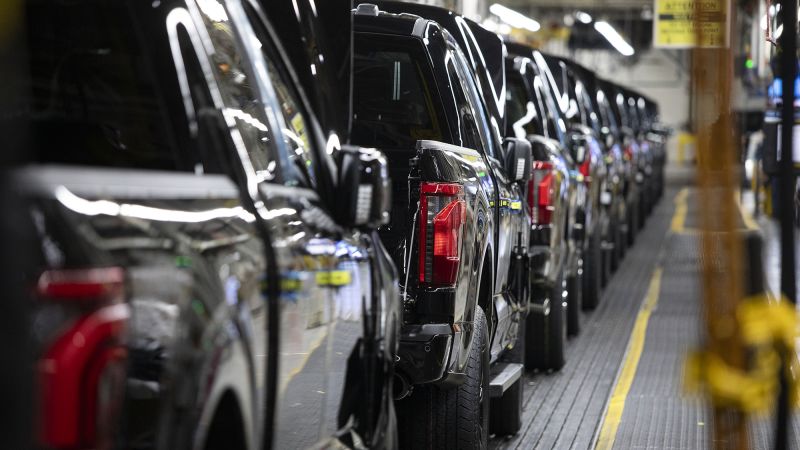Ford Motor Company recently announced that the imposition of auto tariffs will lead to an estimated cost of $1.5 billion this year. Nevertheless, the automaker remains optimistic in forecasting that overall car prices in the United States will not experience significant spikes as a direct consequence of these tariffs. Chief Financial Officer (CFO) Sherry House clarified these points to reporters on a recent Monday, emphasizing that while a modest increase in car prices is projected—between 1% and 1.5%—this is largely attributable to tariffs on both imported vehicles and auto parts.
In conjunction with an earnings report that highlighted a steep decline in profits during the initial three months of the fiscal year, House’s comments provided insight into Ford’s expectations for the used and new car markets going forward. Of particular concern is the potential for automakers, including Ford, to retract promotional incentives currently offered to car buyers. Such measures, House warned, could result in increased costs for consumers looking to purchase cars in the near future. Furthermore, projections indicate that sticker prices for new models may incrementally rise come fall.
Ford’s outlook for the remainder of the fiscal year is compounded by changing dynamics within the industry. After witnessing significant sales activity earlier in the year—driven by consumers acting preemptively ahead of the tariff’s effective date in April—the company anticipates a notable downturn in overall industry sales during the second half of the year. Car buyers flocked to dealerships earlier this year, motivated by the looming tariffs, but the later market could bear scars from this rush.
The introduction of tariffs on imported vehicles and auto parts by President Donald Trump has prompted widespread anxiety within the automotive industry regarding the financial impact. The tariffs entail a hefty 25% duty on all imported cars, with a similar levy imposed on auto parts. The situation has further complicated as the administration recently unveiled regulations that may allow manufacturers to mitigate some of these new costs, albeit amidst escalating uncertainty.
While the financial repercussions of tariffs on Ford are eye-catching, they pale in comparison to the alarming estimates put forth by General Motors (GM). In its messaging to shareholders, GM has projected that duties could run between $4 billion and $5 billion through to the end of 2025. Ford, in contrast, benefits from a domestic production advantage, with more than 80% of its cars and trucks sold in the U.S. assembled within American factories. In contrast, GM is more reliant on international production, manufacturing numerous vehicles in Canada and Mexico.
In light of the unpredictable operating landscape—exacerbated by ongoing supply chain disruptions—Ford has regrettably chosen to retract its previous forecast for full-year earnings, citing broader economic uncertainties. The pricing perspective for Ford aligns closely with comments made by GM CEO Mary Barra, who similarly conveyed to investors that she did not foresee drastic shifts in the pricing landscape.
Additionally, during a recent interview with CNN’s Erin Burnett, Ford CEO Jim Farley disclosed the continuation of the company’s “employee pricing” offer until July 4. However, he refrained from committing to price stability post-offer. Currently, Ford is focusing on reducing its stockpile of imported vehicles that entered the market before the dawn of the tariffs.
As of now, the situation regarding Ford and the future pricing of cars in the U.S. is still unfolding, with ongoing developments anticipated. This narrative reveals the broader implications of tariff policies on the domestic automotive landscape and ultimately shapes the buying experience for consumers. This article will be updated as new information becomes available, underscoring the dynamic nature of economic conditions affecting the sector.



